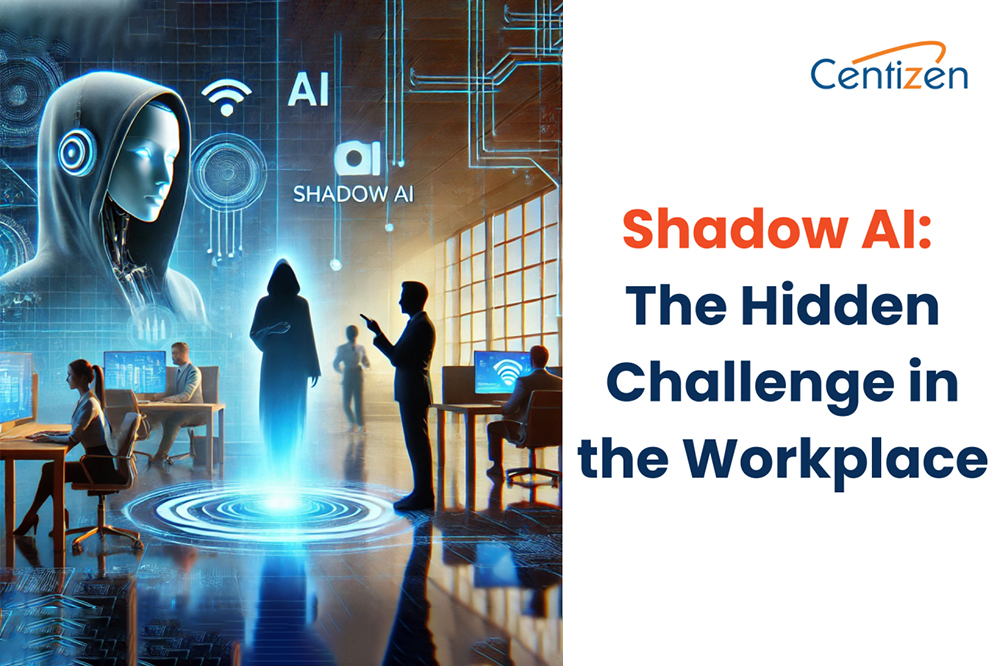Shadow AI: The Hidden Challenge in the Workplace

Artificial intelligence is transforming industries such as finance, healthcare, and IT, streamlining workflows and boosting efficiency. However, not all AI usage is officially sanctioned. “Shadow AI” refers to the unauthorized use of AI tools and systems within an organization—often by employees seeking efficiency but bypassing IT oversight. While these tools can enhance productivity, they also introduce security, compliance, and operational risks.
Understanding shadow AI
Shadow AI includes any AI-driven tools, models, or applications used without approval from an organization’s IT or security teams. These solutions may involve anything from AI-powered content generators like ChatGPT to analytics platforms and AI-driven coding assistants like GitHub Copilot.
Why does shadow AI happen?
Employees adopt AI tools independently for several reasons:
- Increased efficiency: AI simplifies tasks like data analysis, report generation, and software development.
- Lack of official AI solutions: If companies don’t provide AI-powered tools, employees may seek external alternatives.
- Faster decision-making: AI accelerates workflows, often bypassing slower approval processes within IT governance.
- Department-specific needs: Different teams, such as marketing, software development, and customer support, may have distinct AI tool preferences that aren’t officially approved.
Risks of shadow AI
- Data security threats: Employees may unknowingly expose sensitive business data to external AI models, leading to potential data breaches.
- Compliance violations: Industries with strict regulations (e.g., finance, healthcare) may face legal consequences if unauthorized AI tools handle sensitive data.
- Integration challenges: Unapproved AI systems may not align with existing IT infrastructure, creating compatibility and security issues.
- Intellectual property risks: AI-generated content or code may raise ownership concerns, particularly in development environments.
How organizations can manage shadow AI
- Implement AI governance: Establish policies outlining approved AI tools and their proper usage.
- Offer secure AI alternatives: Provide employees with authorized, compliant AI solutions tailored to business needs.
- Monitor AI usage: Deploy security tools like AI usage detection software to identify unauthorized AI activity within the organization.
- Educate employees: Conduct awareness programs to highlight AI risks and best practices.
The path forward
AI adoption is inevitable, but organizations must strike a balance between innovation and security. A well-structured AI governance framework not only mitigates risks but also fosters responsible AI usage, helping businesses leverage AI securely and effectively.
Our services:
- Staffing: Contract, contract-to-hire, direct hire, remote global hiring, SOW projects, and managed services.
- Remote hiring: Hire full-time IT professionals from our India-based talent network.
- Custom software development: Web/Mobile Development, UI/UX Design, QA & Automation, API Integration, DevOps, and Product Development.
Our products:
- ZenBasket: A customizable ecommerce platform.
- Zenyo payroll: Automated payroll processing for India.
- Zenyo workforce: Streamlined HR and productivity tools.
Services
Send Us Email
contact@centizen.com
Centizen
A Leading Staffing, Custom Software and SaaS Product Development company founded in 2003. We offer a wide range of scalable, innovative IT Staffing and Software Development Solutions.
Call Us
India: +91 63807-80156
USA & Canada: +1 (971) 420-1700
Send Us Email
contact@centizen.com






